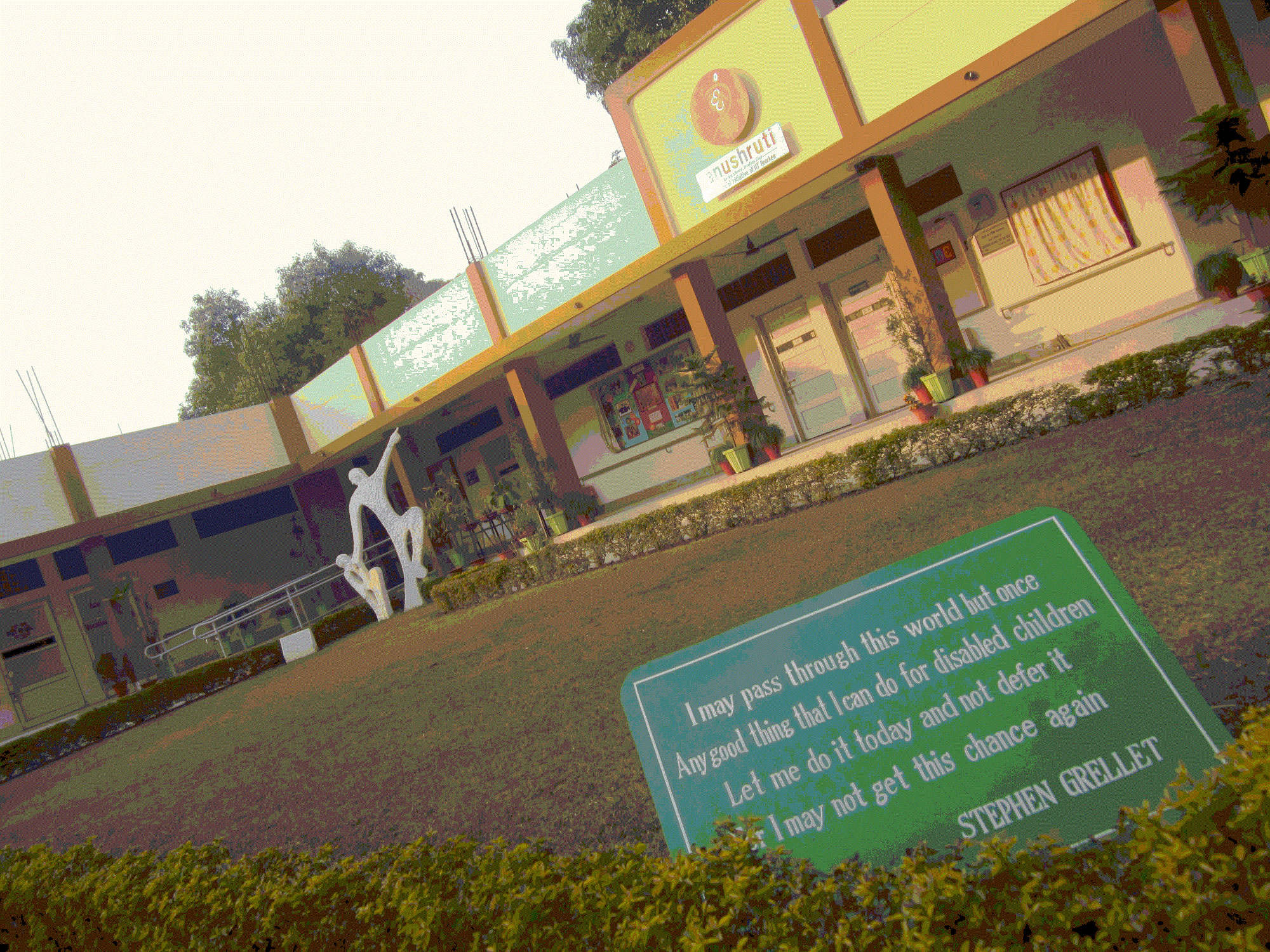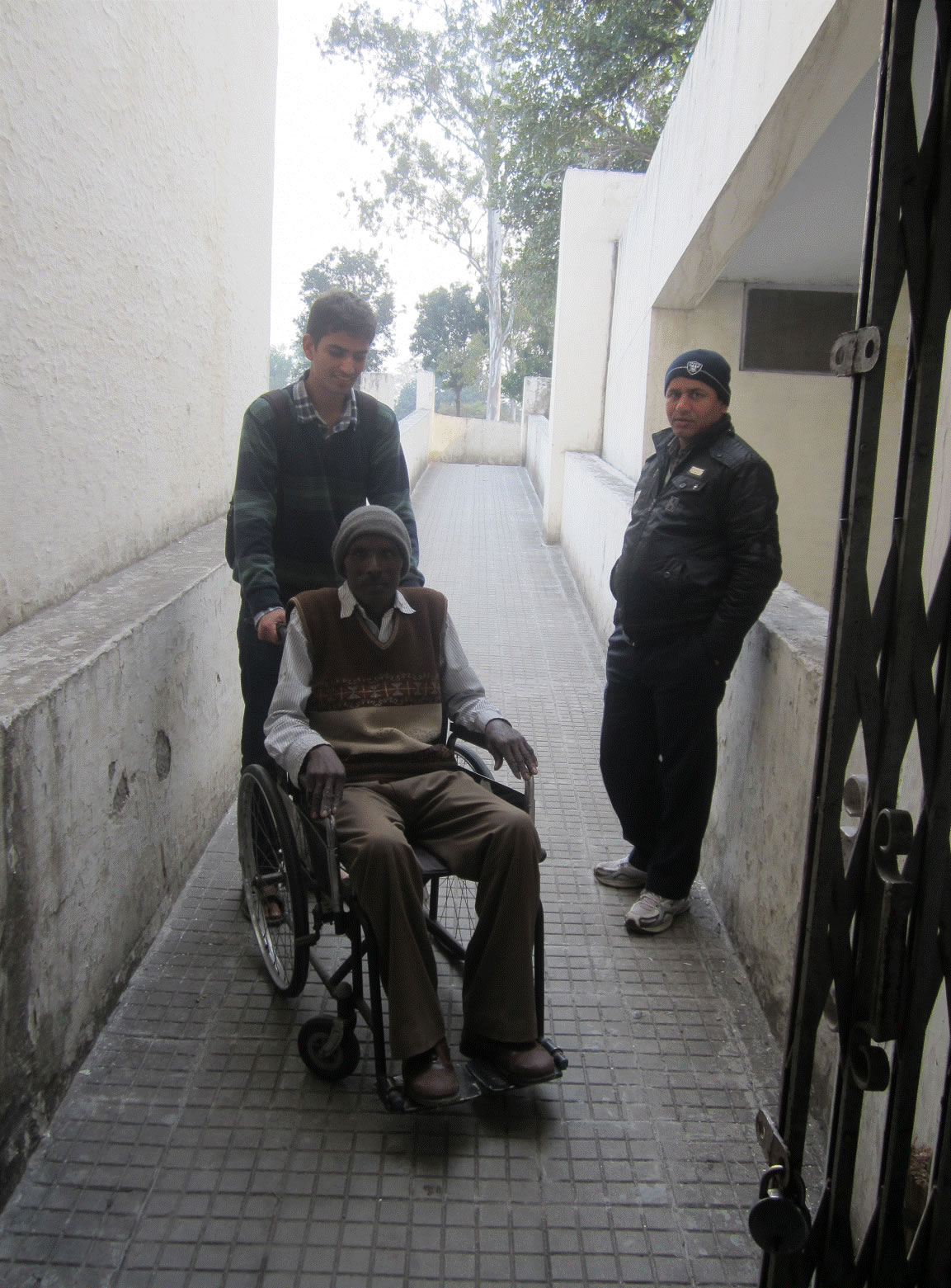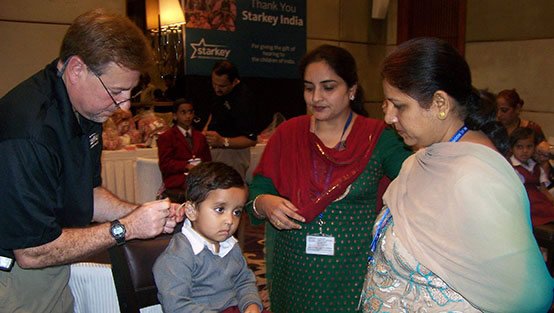[ID:746] Bringing a revolution to Roorkee : The archetypal Indian townIndia India has had a long legacy of producing distinguished artists, making exemplary contributions to the country's rich heritage, who were born physically challenged. The great poet Surdas, for instance, credited with more than hundred thousand songs or hymns, was blind. The Indian mythology contains legends about Dhritrashtra, the blind King in Mahabharata, and Ashtawakra the great philosopher with deformities. Manusmiriti, or the 'Laws of Manu', was an ancient code book for rules and protocols of social conducts that implored people to engage in philanthropy and take care of the less fortunate people of society. Even today, classical folklore and grandma’s bedtime stories elucidate the merits of helping the disabled to 'earn Punya' – a step towards heaven, in the process. But the paradigm, initially intended to do a good turn, has otherwise nurtured an attitude of pity in the society towards the physically challenged, instead of empowering them and creating a system to make them self-dependent, which is the need of today.
It should not come as a surprise, then, that taking up the cause of disability did not come naturally to us. Having been granted freedom in 1947 after decades of commercially exploitative colonial rule, followed by the bloodiest partition riots in human history; managing to stay alive and making ends meet were a feat in those times. Naturally, a young nation, plagued with graver concerns revolving around women’s safety and empowerment, malnourished children and abject poverty, put the issue of looking after the needs and aspirations of persons with disabilities on the back burner. While superficially the country seems to have come a long way since then, even now, there is no dearth of disparities in the social facets.
Corroborating this statement is an observation made during a survey conducted by us in our IIT at Roorkee. The survey inquired about the social causes the students liked to relate themselves with. While female students empathized mostly with feminist causes, male students chose from a gamut of causes ranging from environment to poverty alleviation, with only 1.2% filling in disability as their top priority. The bias could be justified by the demographics of the country, as the 2001 census recorded only 2.13% of the population as disabled. Notably though, the scope of the definition of disability was comprehensively widened in the last census, increasing the recorded figure from 21 million then to about 100 million in 2011, an alarming increase – which should further prod the law makers to consider the rights of the disabled seriously.
Of late, some developments have taken place at the legislative level. The Persons With Disabilities Act (1995), and now the Rights of Persons With Disabilities Bill (2012) have at least broken the ice and let proceedings start for creation of an inclusive environment. But for a country which has always been a victim of over legislation and under implementation, disparities loom large – what with the Delhi metro-rail touted to be a masterpiece of sophisticated infrastructure for the disabled on one hand, and thousands of towns and villages in the country bereft of even basic infrastructure on the other. At IIT, the government reserves 3% seats for the physically disabled, but more than half of these seats go unfilled every year.
On arrival to Roorkee, as undergraduate students of the Indian Institute of Technology, it was ironical to find an Institute of National Importance and one of the country’s oldest Army Cantonments – the Roorkee Cantonment, thriving amid a cluster of austere rural and semi-urban settlements. Located in the foothills of Himalayas, Roorkee is the archetypal Indian town having a population of about 200,000. It is representative of those 200 odd towns in the country acting act as nucleus around which life revolves in many Indian Districts, and it takes just one glorious example of human endeavor to make the others follow suit. Roorkee can act as a role model for bringing about a social change among the 90% Indians who do not enjoy the perks of living in a metropolitan city. Also, the IIT at Roorkee is a part of a chain of 15 IITs in the country, referred to as prime institutions of national importance. Not only is it easier to mobilize people and resources here, the changes here can not escape the appreciation of the rest of the country, and the eyes of responsible media, which could inspire its other 14 sister campuses to work on similar lines to begin with.
Our university, initially the Thomson College of Civil Engineering, was established under the British regime in 1847. Transformed into an IIT later, most of the parts of the university are still housed in the buildings with 19th century British architecture constructed during colonial times. In 2008, under the flagship scheme (SIPDA – Scheme for Implementation of Persons with Disabilities Act) of the Government of India, a complete overhaul of the university campus was envisaged. The SIPDA recommended transformation of the infrastructure of all existing buildings of importance, including all prominent educational institutes and offices, to make them inclusive. It allowed for financial assistance up to Rs. 5 million for making buildings barrier free, and Rs. 2 million for making websites accessible. It is extremely appalling though, that in such a scheme floated years ago, only 6-7 institutions have applied from the entire country so far for financial assistance to incorporate these revisions. It catches us on the wrong foot with our initial misleading assumption of the expenses involved acting as a deterrent to such reforms.
At IIT – Roorkee, the reforms were planned in two phases. The first phase, taking place in 2008, amounted to a total cost of Rs. 4 million, with installment of 40 ramps at strategic positions, and construction of 24 special toilets. Wheelchairs were ordered and made available in adequate numbers in all hostels and guest houses in the institute. The presence of Anushruti, a school for the hearing impaired, within the IIT campus has served as a source of inspiration to those working in this field. Anushruti, meaning 'legend', justifies the etymology. Established just 23 years ago, the school is ahead of its times amid the modest semi-urban settlements. Currently, the school has about 100 students hailing from villages as far as 65 kilometers away, from nearby towns like Muzzafarnagar and the holy city of Haridwar. The school is being run as a research based, and Community Based Model wherein the funds are raised from within the society consisting of friends, relatives, industrialists and organizations with an aim to impart quality education and training to the deaf children. Incorporated with sophisticated infrastructure and equipment for cognitive learning capabilities for children, the school is a symbol of hope for those hapless locals who would have otherwise been unable to provide proper schooling to their hearing impaired children, with the only other alternative being to send them hundreds of miles away to bigger cities, reeling under the dual pain of separation and financial debts. Along with regular education, the school students are also given vocational training in about 7 different areas e.g. computer, photography, hospitality (cooking, catering management), cutting and tailoring, drawing and painting.
The second phase of reforms at IIT, yet to be undertaken, can be a path breaking success if implemented at the community level. The beginning should be made with the creation of a team of sensitive students and professors. The aim is to include, apart from the conventional, infrastructure for vocational and sport activities – things never done before in the Indian context; while keeping costs low, by involving local resources and volunteers. In an institution renowned for its Civil Engineering, the involvement of civil engineering and architecture students for small scale construction procedure can be significant. Apart from being an on-site experience it would help in making the students realize the larger notion of social art of architecture. Electives for social responsibility are already a part of the university curriculum, and inclusion of infrastructure development would further ingrain these measures in the Roorkee ideology.
Incorporating physical infrastructure, without the requisite cognizance of their utility, is an incomplete measure in itself. For many months in our freshmen year, we walked over the strategically placed tactile markers dismissing them as random yellow bands. Neither had we taken notice of Anushruti, a building that has stood there for 23 years. Our apathy might have persisted had we not become sensitive to the disability of one of our own professors.
We would see Prof. Chani walk around with his stick, sometimes, even to the topmost floors of the department, the discomfort from it never marring his amiable demeanor. When we were made aware of his story, knowing how a road accident had resulted in his existing bodily disability, we couldn't help but imagine ourselves in the shoes of a jovial young boy, with his life suddenly changed in a single day. It jolted us out of our comfort zones of being born complete, and exposed our vulnerabilities to fate.
Workshops dedicated to the same cause further opened our eyes. Made to sit in wheelchairs and expected to traverse the department like that, we discovered even routine activities like pushing a door open or using the restroom facilities could become tricky. Awareness campaigns like these, undertaken by students themselves, while involving students from Anushruti is bound to strike a chord with the rest of the institute as well as the locals, and need to be made the norm of the day.
Initially, we hope to start the reconstruction work with the structures that already exist in the campus. As Prof. Chani puts it, “given that the degree of my disability is low, there isn’t any building in the campus that is completely inaccessible to me; though the provision of elevators in buildings is imperative, especially for the amputees, or people with more serious disabilities.” Elevators are, surprisingly, missing from all buildings, be it hostels, departments or staff residences. Their installation would however be financially viable in few buildings, and the rest may have to suffice with additional ramps.
The first building to be targeted would be the IIT Hospital. Having made a humble beginning 65 years ago, presently the hospital is a mixed bag with a well-equipped pharmacy store on one hand, and inadequate number of doctors available on the other. The renovation work would involve installation of announcement systems, both verbal and visual, taking care of the hearing and visually impaired respectively. Further, installation of tactile markers and construction of an inclusive toilet should be sufficient to call the hospital inclusive and barrier-free for the physically disabled. It would then be serving as the only inclusive hospital in a radius of 70 miles – hence, taking care of patients from far off towns and villages.
While we are busy focusing on making buildings inclusive, we should take a moment to consider the experience of exploring the campus. Covering an expanse of 365 acres, the institute campus encompasses various departments, hostels, staff quarters and places of worship spread out over undulating terrains that are a signature feature of the region. While the professors may use cars, rickshaws and bicycles are the only means of transport for the students. Signboards providing directions are few and far between, and asking for directions is usually the only resort. Needless to say, traversing the campus is a daunting task on a daily basis for the disabled, and we find most of them shying away from stepping out, unless absolutely necessary. For women, this lack of facilities is a huge deterrent to having a worthwhile experience of the campus; with the presence of a large number of shady, not patrolled areas, the apprehension of untoward instances is ever present. Disabled women have been found to be an easier target of sexual assaults, and with insufficient security and infrastructure, it is no surprise that the already dismal IIT sex ratio is skewed further as women with disabilities decline the chance to come to Roorkee, despite having meritoriously cleared a tough entrance examination.
While the institute has its own set of buses, hardly have they ever been spotted in use. Creating a commercially sustainable transportation system would be a welcome solution for the situation. Fitting hydraulic lifts in buses, and putting them on-call duty would serve the disabled and the regulars alike and save a lot of travel time for menial routine activities.
A measure that could serve as the game changer, quite literally, is an annual Para-Inter-IIT sports meet for the disabled alongside the regular annual Inter-IIT sports meet. The Inter-IIT sports meet, the Indian version of the Ivy League, is held annually with teams participating from all 15 sister IITs. In a society where prejudice against people with disabilities is seen as a major obstacle for their holistic integration into society, sport can be a fantastic tool to help in dealing with this social stigma and discrimination. By an estimate, 80-100 students with disabilities reside in all IITs at a time. Hence, forming a contingent of 15-20 students should be possible for every IIT to represent them in the meet. When not being used for the sports meet, the facilities could be simply used by the disabled to participate in recreational sport for fun.
An informal inquiry done from the Paralympic Committee of India left us with a list of sports, which could be sustainable with the current budget and time constraints. Sitting Volleyball, Football 7-a-side, Football-5-a-side for the visually impaired and Wheelchair Basketball are the sports that could be played in the existing field of play of their regular body counterparts with slight modifications in infrastructure. For instance, Football 5-a-side for the visually impaired, which is played with a noisy ball on a 42m long and 22m wide pitch, could easily be marked on the IIT Football field which is 100m long and 60m wide. Similarly, Football 7-a-side, played on a 75m long and 55m wide pitch, could be organised too. Apart from such sports played on ground, another sport which could be contested during the meet in Roorkee is Rowing. The institute owns a boat club and hosts many racing competitions both among IIT students and among soldiers from the nearby army cantonment area in Roorkee. The boats being used by the regular bodied rowers could be used without significant changes by the persons with disabilities as well.
As we stroll around the institute, observing a few people with disabilities, we figure, in the Indian context, they are far more fortunate to be here than anywhere else. But from the point of view of a lifestyle, rather than just survival, the present is not even close to what they deserve. It is our dream to see the disabled become active participants of the campus activities, to see them excel at sports and to find them as comfortable with the idea of recreation, as they are within their carefully engineered classrooms.
References -
http://censusindia.gov.in/ http://www.worldbank.org/en/country/india http://www.anushruti.in/ http://www.thehindu.com/news/national/the-disabilities-bill-is-a-mixed-bag/article3927212.ece
If you would like to contact this author, please send a request to info@berkeleyprize.org. |



